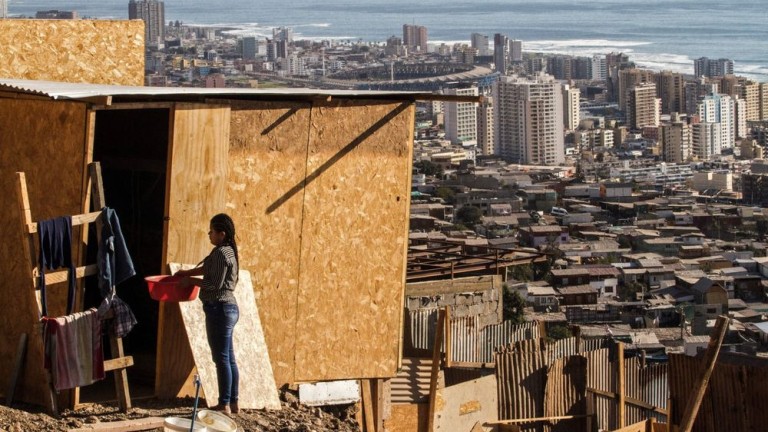
Why a dark future demands urban leadership
Ian Klaus
Published:24 Jun 2021, 10:58 AM

Why a dark future demands urban leadership
In April, the New York Times headlined its editorial about the US National Intelligence Council’s quadrennial Global Trends report in stark terms: “Why Spy Agencies Say the Future is Bleak.”
In the 144-page report, Global Trends 2040: A More Contested World, US intelligence analysts lay out a hazardous future in the wake of the Covid-19 pandemic, envisioning scenarios of dystopian technological surveillance, climate-change-provoked political instability, and fierce geopolitical competition between the United States and China.
This isn’t news, the eagerness with which many in 2020 looked forward to 2021 shouldn’t be confused with general optimism for the state of the world two decades out. But another headline could be crafted out of this rigorous analysis of unsettling long-term trends: “Why Spy Agencies Say the Future Is Urban.”
While the challenges to governance at all levels, whether it be the collapse of identity at the national level or finance at the local, sit at the heart of much of the report’s analysis, they also lead to perhaps the most striking governance-related conclusion. “Cities and subnational governments have greater ability than national governments to create and lead multisectoral networks involving various levels of government, private sector, and civil society.” The report continues: “Local and city governments, increasingly organized into networks, will take action on international issues such as climate change and migration, getting ahead of national governments in some cases.”
Global Trends is the flagship foresight publication of the US intelligence community. Its authors, experts with decades of experience and from an array of backgrounds, get input from more than a dozen different US intelligence agencies, and also consult with outside experts. While public facing, NIC reports are widely used across the federal government. But they are not normative or prescriptive, and thus read very differently from the policy reports put out by nonprofits, philanthropies, think tanks and universities. Intelligence analysts do not describe the world as it should be, nor can they describe the policy steps needed to make it so. Forced to hold their tongues on recommendations, intelligence officials are also unburdened of the complicated relationship between analysis and policy proposals, making Global Trends a particularly valuable document for those interested in figuring out exactly how best to prepare for a very challenging future.
Just about every long-term trend identified by the National Intelligence Council, from a growing urban middle class to rising sea levels, has major implications for cities and urban life, but the report goes further, addressing head-on both cities and key issues around urbanization.
Like previous National Intelligence Council reports and similar reports published by the Department of State, Global Trends 2040 looks at global urbanization trends, predicting that nearly two-thirds of the world’s population will be living in cities by 2040, “with nearly all of that growth in the developing world.” But these broad demographic statements are complemented by specific attention to key cities and regions. It’s in the urban contexts explored and developed, rather than mere numbers, that the report represents a paradigmatic change.
This attention to urban finance acknowledges both implicitly and explicitly the role of cities as essential actors in shaping the 21st century. That’s a noteworthy analytical shift for the US intelligence community, and a step-change in the intellectual history of urbanization. Over the last 15 years, cities have moved from arenas, to potential partners, and now to policy leaders and implementers.
That cities are at the forefront of collective action and policy innovation is not breaking news; the world’s largest and most-resourced intelligence community saying so in its flagship public-facing publication is. Indeed, in this report, the National Intelligence Council has probably gone further in its conclusion relating to city leadership on the global stage than any national government.
This is not the vote on international issues some global city organizations, such as as United Cities and Local Governments and the Mayors Migration Council, have sought, but it is a striking affirmation of decades of city diplomacy, policy innovation, network building and mayoral leadership. The catch, of course, as the report’s title indicates, is that cities have taken their seat at the international table just in time to help guide a contested world.
Foresight aside, we have more certainty about the world we live in now. It was noteworthy that the White House’s Leaders Summit on Climate in April included mayoral voices. As emerging research and the ongoing IPCC Sixth Assessment Report make clear, they are facing a climate crisis more dire than previously understood, along with a cascade of other challenges that we won’t be able to predict. The NIC confirms what many urban leaders already knew: Cities have arrived at the global party. But it’s going to be a riotous, chaotic, and rapidly evolving one.
* Ian Klaus is senior fellow at the Chicago Council on Global Affairs and co-author of Summary for Urban Policymakers: What the IPCC Special Report on Global Warming of 1.5°C Means for Cities. Previously he was senior adviser for global cities at the US Department of State